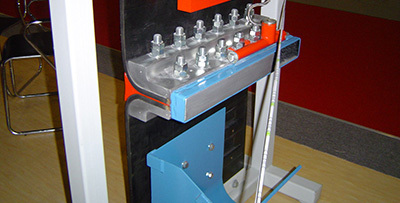News Center
Hezi technology focuses on the research and development of "rapid seamless conveyor belt joint sleeve" innovative technology project

NEWS CENTER

News Details
Understanding Belt Fasteners for Rubber Belts: Essential Insights for Professionals
Release time:
2025-01-04
This article delves into the significance of belt fasteners used in rubber belts, particularly within the chemical industry. It offers a detailed overview of various fastener types, their applications
When it comes to rubber belts in the chemical industry, belt fasteners play a crucial role in ensuring the efficiency and reliability of operations. Rubber belts, commonly utilized in conveyor systems, are essential for transporting materials and products across various stages of production. However, the performance of these belts largely depends on the quality and type of fasteners used to secure them.
Belt fasteners for rubber belts can be classified into several categories, including mechanical, metal, and plastic fasteners. Mechanical fasteners, often favored for their durability and ease of installation, are designed to hold the ends of the rubber belt securely together. They are particularly useful for belts that require frequent maintenance or replacement, as they allow for quick and hassle-free adjustments.
Metal fasteners are another option, offering robustness and strength. These fasteners are typically made from stainless steel or other corrosion-resistant materials, making them ideal for harsh chemical environments. Their ability to withstand high temperatures and aggressive chemicals ensures that they maintain their integrity over time, reducing the risk of belt failure.
Plastic fasteners, on the other hand, are lightweight and resistant to corrosion, making them suitable for specific applications where metal fasteners might not be appropriate. They are often used in industries where the risk of rusting or chemical reactions is a concern. Moreover, plastic fasteners can offer a level of flexibility that can be advantageous in certain operational contexts.
The choice of belt fasteners is critical not only for the longevity of the rubber belt but also for the overall efficiency of the system. Properly secured belts minimize the risk of slippage or misalignment, which can lead to costly downtimes and safety hazards. Additionally, the right fasteners can contribute to the smooth operation of the conveyor system, ensuring that materials are transported consistently and reliably.
Another important factor to consider is the installation process of these fasteners. A well-executed installation can significantly extend the life of rubber belts. Professionals should be trained in the correct procedures for installing and maintaining belt fasteners to ensure optimal performance. Regular inspections of both the belts and their fasteners can help detect any issues before they escalate, further enhancing operational efficiency.
In conclusion, understanding the importance of belt fasteners for rubber belts is essential for professionals in the chemical industry. By selecting the right type of fastener and ensuring proper installation and maintenance, businesses can enhance the performance, reliability, and longevity of their rubber belts, ultimately leading to improved operational outcomes.

Recommend News





























